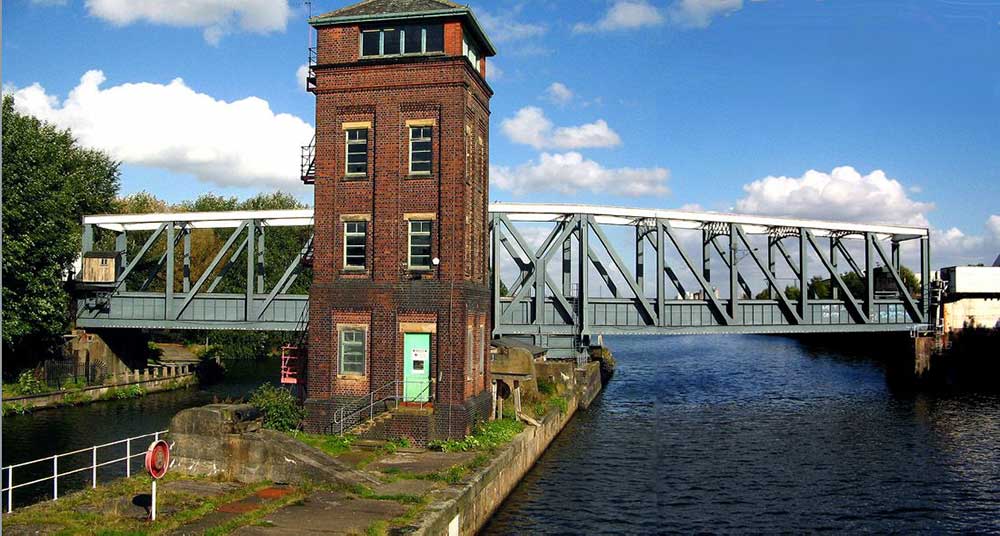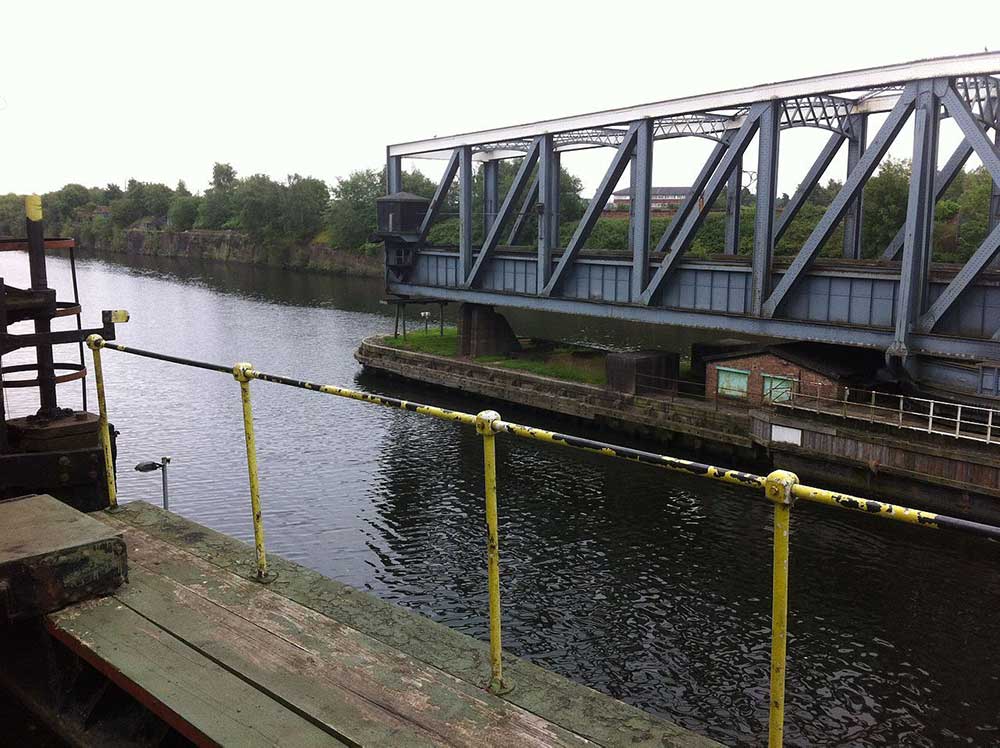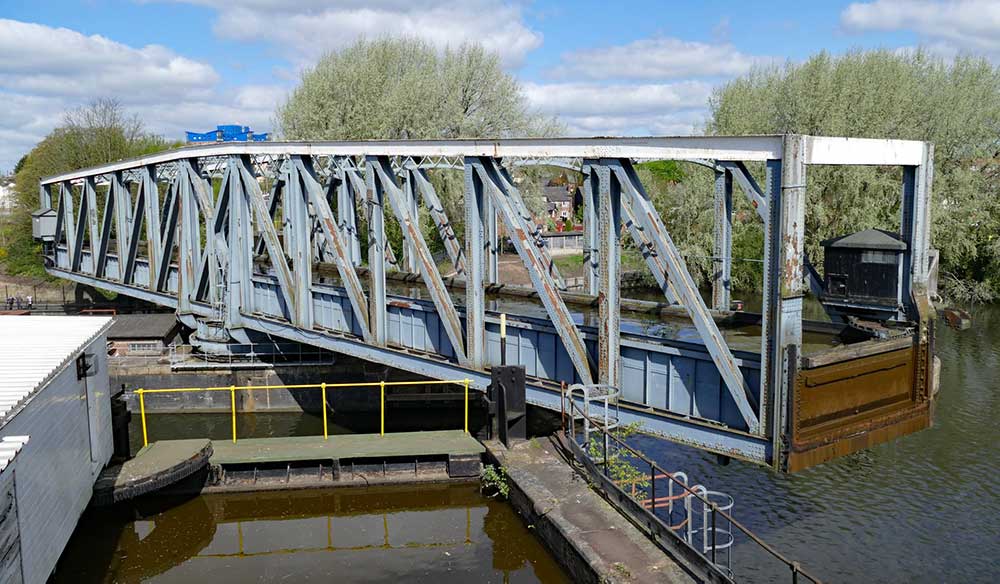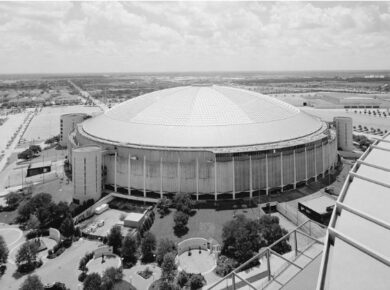let’s swing a’round the clock!
The Barton Swing Aqueduct is a moveable navigable aqueduct in Barton upon Irwell, England. It carries the Bridgewater Canal across the Manchester Ship Canal. The swinging action allows large vessels using the ship canal to pass through and smaller craft, both narrowboats and broad-beam barges, to cross over the top.

Photo: G-Man / Public Domain
The aqueduct, the first and only swing aqueduct in the world, is considered a major feat of Victorian civil engineering. Designed by Sir Edward Leader Williams, the swing bridge opened in 1894 and remains in regular use.

Photo: Ken Churchill / Public Domain
When closed, it allows canal traffic to pass along the Bridgewater Canal. When large vessels need to pass along the ship canal underneath, the 1,450-tonne and 100 m long iron trough is rotated 90 degrees on a pivot mounted on a small purpose-built island. Gates at each end of the trough retain around 800 tons of water; additional gates on each bank retain water in their adjacent stretches of canal.
The turning mechanism built into the central island consists of a 8.2 m race plate embedded in granite blocks. Sixty-four tapered cast iron rollers sat on top of the race plate, held in position by a spider ring. On top of that an upper race plate supports the aqueduct and its circular gear rack, which was powered by a hydraulic engine.

Photo: Andrew
The weight of the structure meant that the design was pushing the limits of the possible. This became clear when the sixty-four hollow cast-iron rollers started to deform. By 1927 the structure had dropped by 8.89 cm. In 1928 the iron rollers were replaced with steel and since then the bridge has dropped by only 2.4mm.
About the Author:

Bruno Dursin – Managing Director at Believe in Steel. Bruno has more than 30 years of experience in promoting steel & steel solutions. His clients benefit from his extensive network within the building industry.



